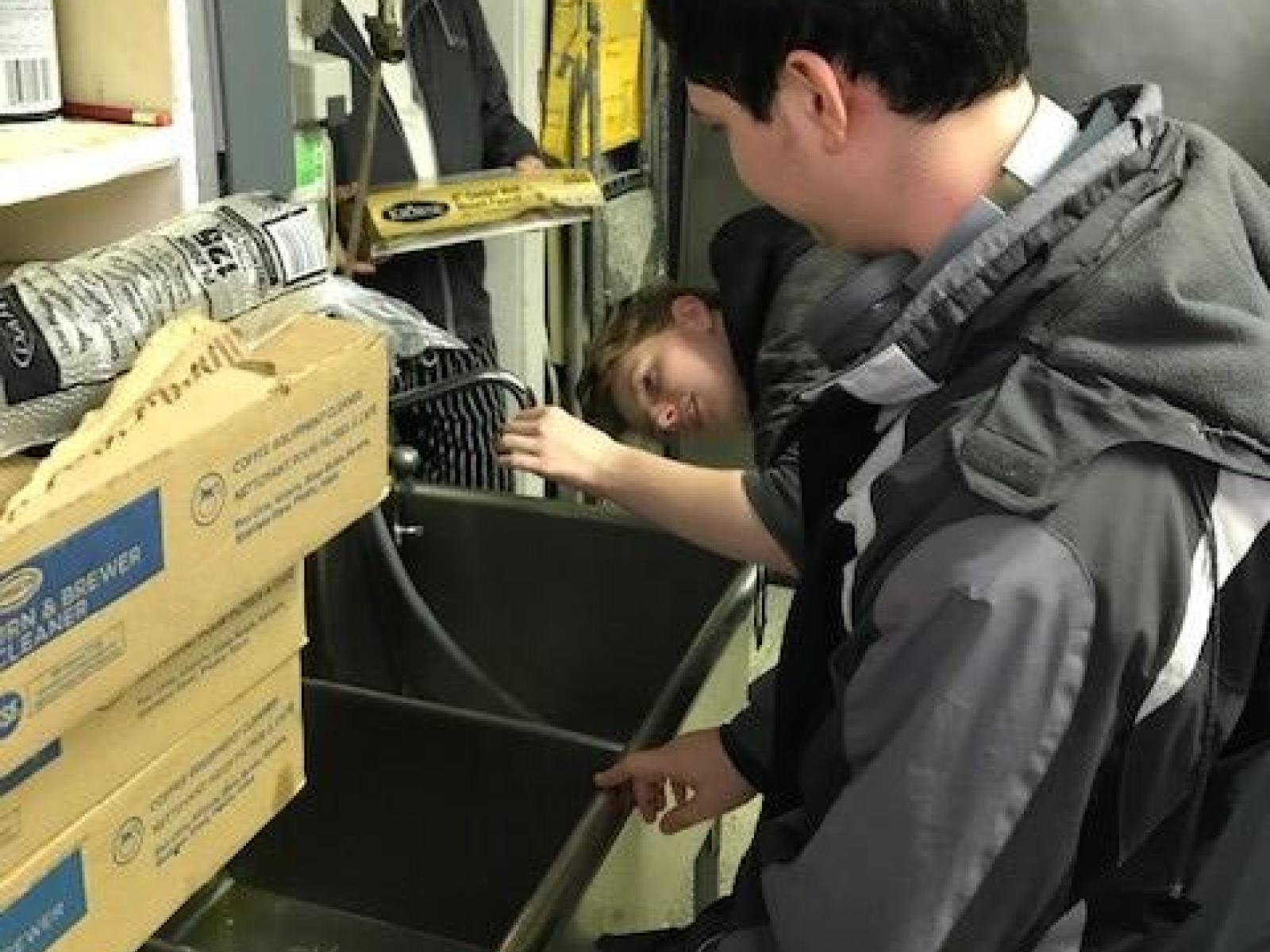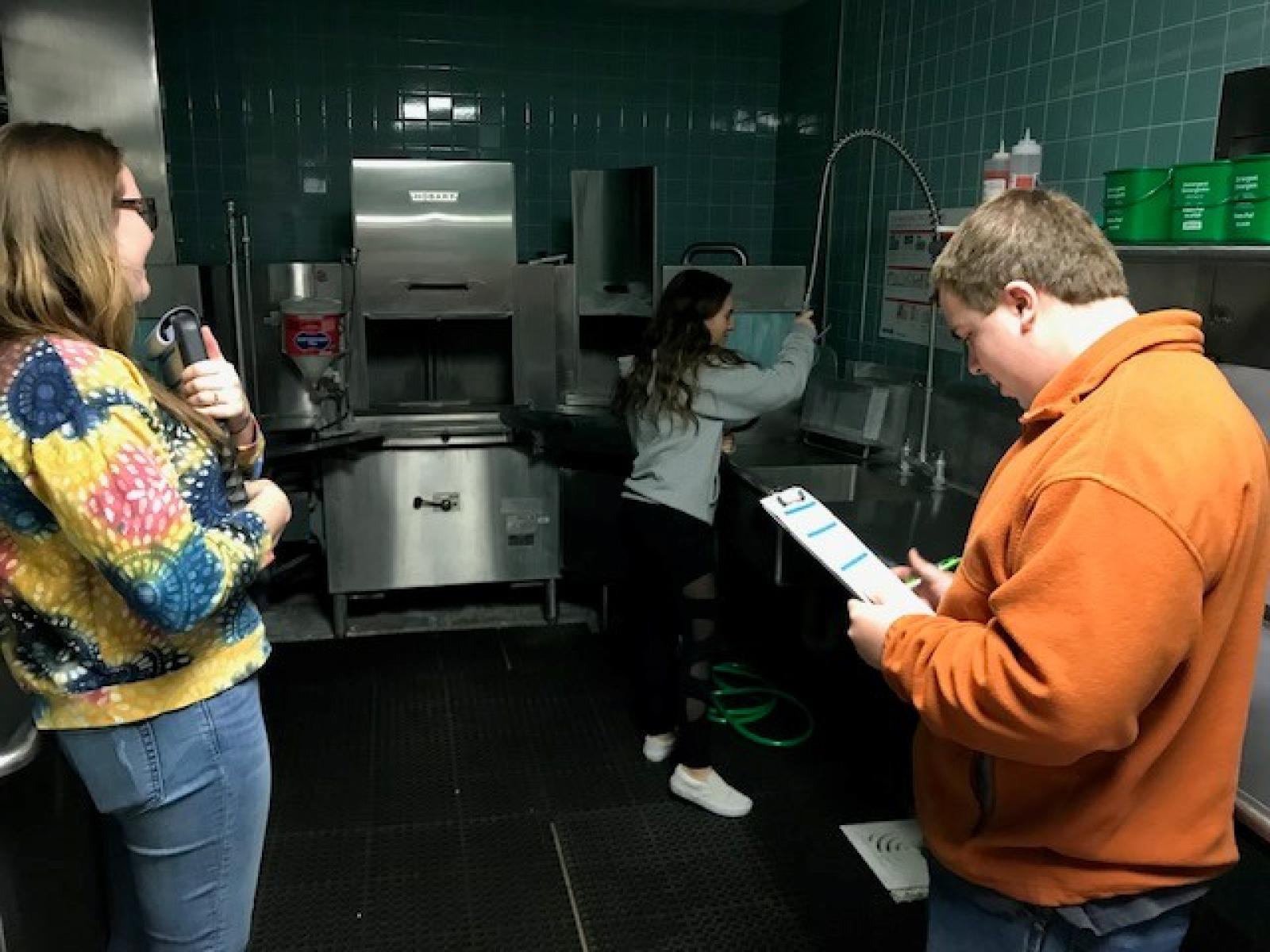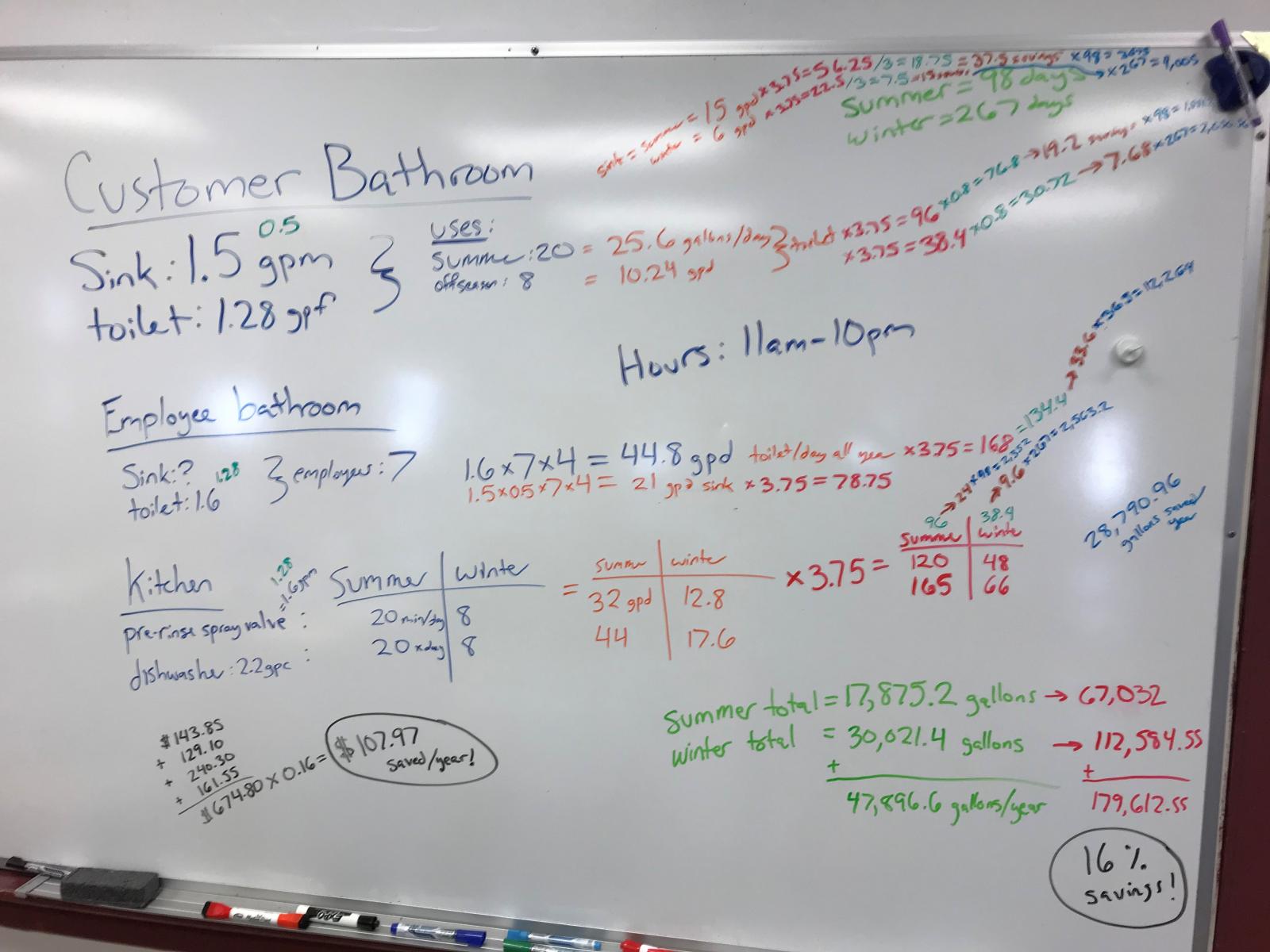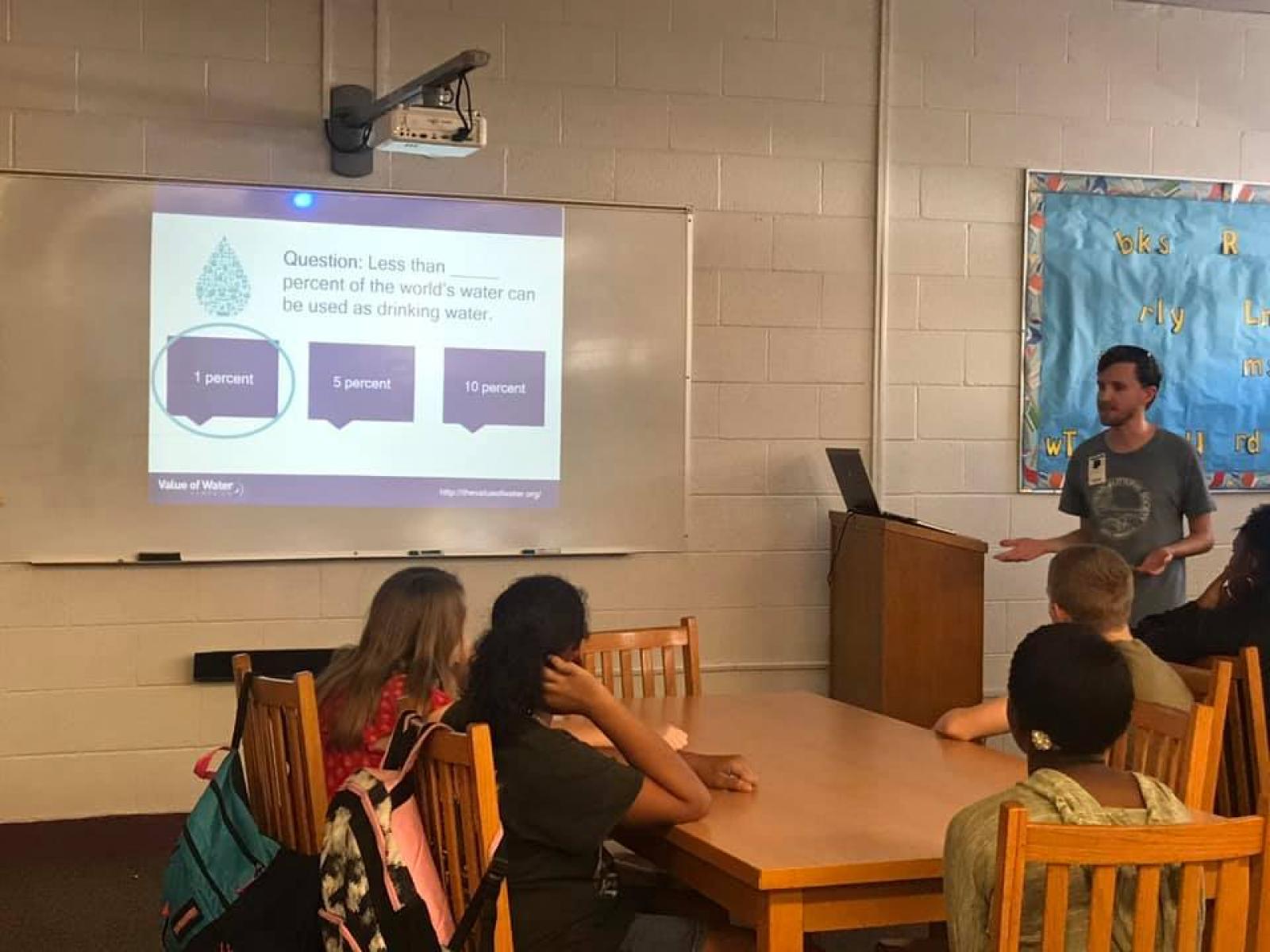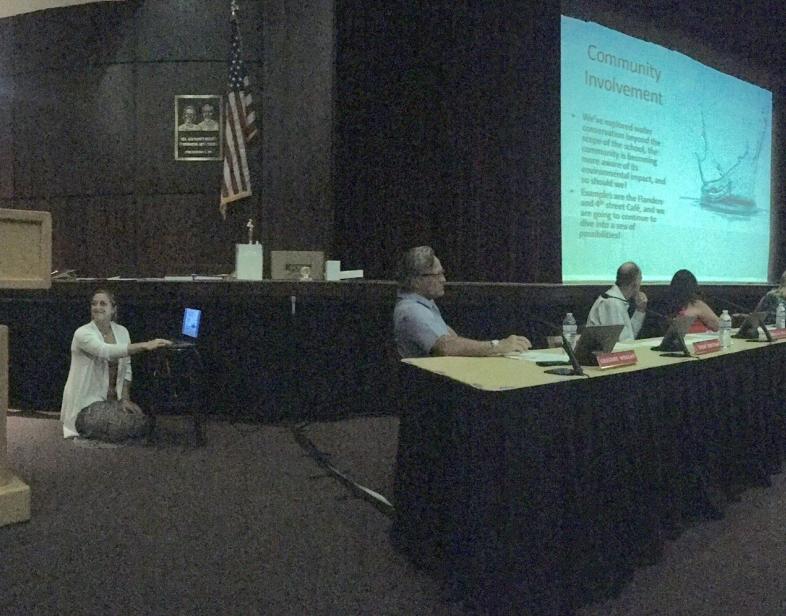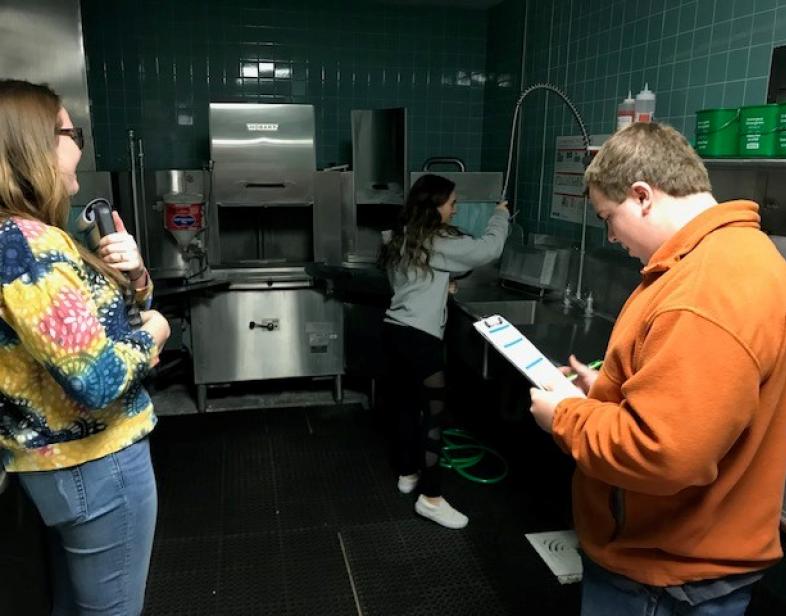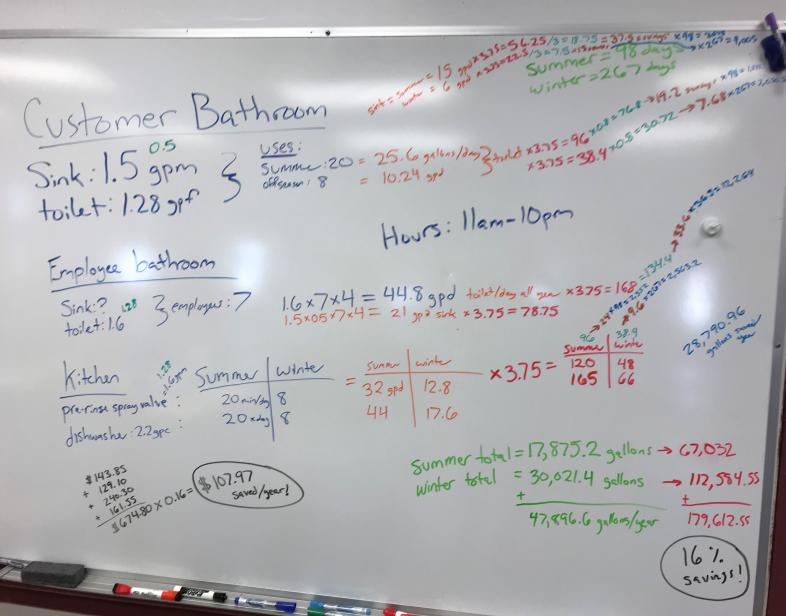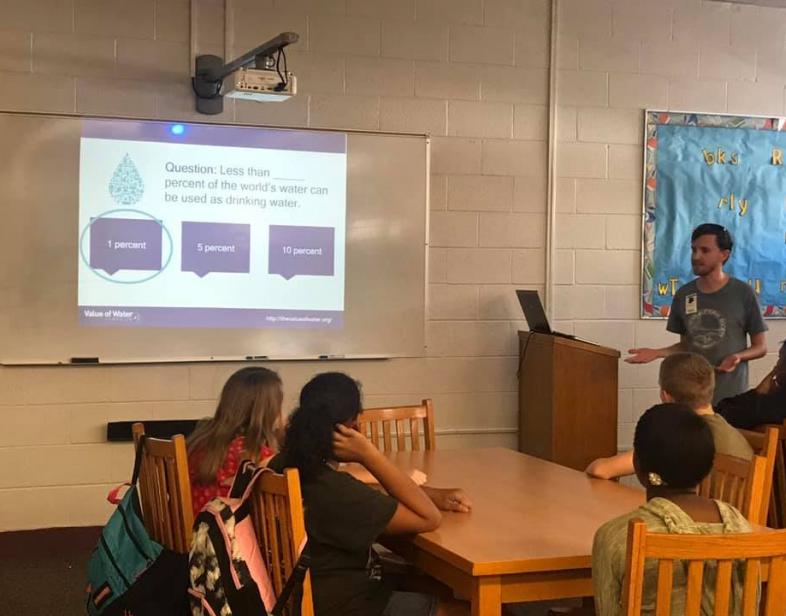An Overview Of Our Solution
The Water Champions program seeks to educate New Jersey youth about the importance of water conservation by training them to perform water audits at their home, at school, and at local businesses. Students then make a proposal to their school board and the audited businesses on how best to save water. Grant money from the EPA is then used to implement the students' recommendations by purchasing water-efficient fixtures for the school and businesses.
- Population Impacted: 3000
- Continent: North America
背景分析
Due to sea level rise, land subsidence, and water overuse, South Jersey coastal communities are at increased risk of saltwater intrusion into the aquifers that the population relies on for its supply of freshwater. Because of this, Cape May City was forced to build the United States east coast's first desalination plant in the late 1990's. The most cost effective and sustainable option, however, is simply to encourage water conservation practices and technologies, thereby preventing the overpumping of the aquifer and the subsequent intrusion of salt water.
描述您希望目标受众采用的技术解决方案。
Students were taught about modern, water-efficient technologies that could be used in the home, at school, and in the local community. Since these were mostly urban and suburban areas, the focus was especially on the EPA's WaterSense certification program and associated household fixtures. Grant money was used to purchase water-efficient toilets, faucet aerators, and pre-rinse spray valves for the schools and local businesses.
描述你的行为干预。
Over the course of several weeks, students were taught about the problem of saltwater intrusion and the possible technological and behavioral changes that would decrease water use. The primary way to accomplish this was by teaching the students to conduct water audits at home, at their school, and in at least 2 local businesses. For example, students at Wildwood High School went around the whole school, cataloguing each water using fixture and its water use rate, then created a detailed survey about student water use behaviors to estimate total weekly water usage for each fixture. It was then determined that the bathrooms near the cafeteria used the most, as well as a few other older inefficient toilets elsewhere in the school. These were the ones that were then replaced with modern, efficient fixtures using grant money. By seeing and measuring water use for themselves, students were empowered to make recommendations in a presentation to the school board which were actually implemented.
使用的行为杠杆
如需要,请更详细地解释你是如何使用杠杆的。
Information was provided to the students over several weeks, which the students themselves then transmitted to the school board and local businesses. Material incentives were provided in the form of grant money to implement the students' recommendations. Once the new, water-efficient fixtures were installed they became the default option, influencing people's choice architecture.
描述项目的实施。
The primary driver of saltwater intrusion is aquifer overpumping, and deceasing water use through more efficient fixtures is an easy solution because it does not require ongoing behavior change - it becomes the default option simply by being there. We are also working on signage so that people know they are using efficient fixtures and will be encouraged to install them themselves. Additionally, we do also hope to encourage behavior change through our Water Champions students themselves. By going through a weeks-long program and seeing real-life results from their efforts, we believe it more likely that these students will both change their own water-wasting behaviors and become changemakers in their communities.
Key factors that enabled our success included great partners in the schools and in the students themselves. Our grantors at the US Environmental Protection Agency and the New Jersey Dapartment of Environmental Protection made the program possible in the first place.
One obstacle was that we had trouble communicating with a private-sector partner who was providing reduced-cost fixtures for the upgrades. Persistent effort eventually overcame this. Our second year in Wildwood was also cut short by COVID19, which has also made it more difficult to get in touch with some of our local business partners - an issue that we believe is being resolved soon.
描述项目的主导者。谁在主导项目实施?
The American Littoral Society, in particular the Education Outreach Coordinator (myself) was responsible for the bulk of the implementation of the program in schools. Other staff at the Littoral Society and NJDEP worked to find schools that were willing to partner with us and arrange the new fixture installs. The school boards had to sign-on, and the teachers who ran the classes or clubs were gracious enough to let us take their valuable time and help with the program. And of course, the students themselves were the ones who conducted the audits, chose local businesses, came up with recommendations, and presented those recommendations. The 3 schools we have done so far are a good representation of Cape May County, with Ocean City being a fairly affluent shore town, Wildwood a fairly impoverised shore town with a large Hispanic community, and Lower Township including a mix of affluent/impoverished and urban/suburban areas.
分享参与解决方案开发和实施的关键合作伙伴。
The program is a partnership between a federal agency (EPA), which provided the funding; a state agency (NJDEP) who administers the program; a non-profit (American Littoral Society) who implements the program; and the schools and local businesses who participate.
谁采用了期望的行为,采取的程度如何? 解释一下你如何测量行为变化的。
The primary adopters of the desired behavior were the schools and businesses who installed new, water-efficient fixtures. The impact of this change was measured by the students who conducted the water audits, which included estimating the amount of water saved by implementing their recommendations. Because this involves a physical installation in existing bathrooms, we know they are being used. Students also conducted water audits on themselves at their own home which we believe are likely to lead to behavior change due to the extended nature of the program. One student for example noted that washing the dishes by hand was her biggest water using behavior, so we gave her a new faucet aerator which cut its usage down by 75%.
项目是如何影响水污染的?请详细说明并包括相关的测量方法。
The primary aim of this program was water conservation. However, if we consider saltwater intrusion into wells a form of "pollution" then cutting down on the overpumping of the aquifer by using less water avoids this pollutant.
您的解决方案如何促进平等(包括种族、性别、民族、社会阶层/收入,或其他)?
Wildwood is a relatively impoverished community, consisting of many seasonal and migrant workers and with a large Hispanic population. By teaching about water conservation and providing efficient technologies, we hope to help to lower the water bills for residents and for the school, as well as ensure that they continue to have clean drinking water in the future.
社会和/或社区是如何受益的?
An additional benefit would be lowering water bills for residents, the school, and the community. Water rates are quite high in this area due to huge increased usage in the summer from tourism.
环境是如何受益的?
This year we plan to move the program into Cumberland County, where the aquifer is close to the surface and so overuse can impact freshwater streams, rivers, and wetlands on the surface.
可持续发展如何得到促进?
One of the UN's Sustainable Development Goals is to ensure access to clean drinking water, something that would be threatened in this area in the long term due to saltwater intrusion into the aquifers.
可持续性:描述你的解决方案的经济可持续性。
The program itself relies on grant funding. However, one of our goals is to create a curriculum that can be used by any teacher in their classroom. We also hope that our Water Champions students will become changemakers in their own communities going forward.
投入产出:实施这些活动的成本是多少?与你上面的结果相比,你的结果如何 这投资吗?
The total grant was $56,000. This covered the cost of 2 sessions of programming each at 3 schools, plus 1 session each at 2 more upcoming schools. It also covered upgrades to bathrooms at all of those schools, plus smaller upgrades at several local businesses. While it is difficult to measure the value of the educational programming, we know for certain that water is saved every time one of those new, efficient fixtures is used.
如何能将这个解决方案成功推广在其他地方?
We are working on turning the program into a curriculum that would be available for any teacher or organization to replicate. If you don't include the grant money for upgrading fixtures or staff time, it would cost nothing for teachers to do in their classroom. If you do include funding for fixture upgrades, it will depend on how much you are changing but toilets usually cost $200+ - several hundred dollars, plus installation costs. Staff time will depend on the organization and how in-depth you want the program to be. A skinny version could include around 10 days for lessons, audits, audit analyzing, and student presentations.
